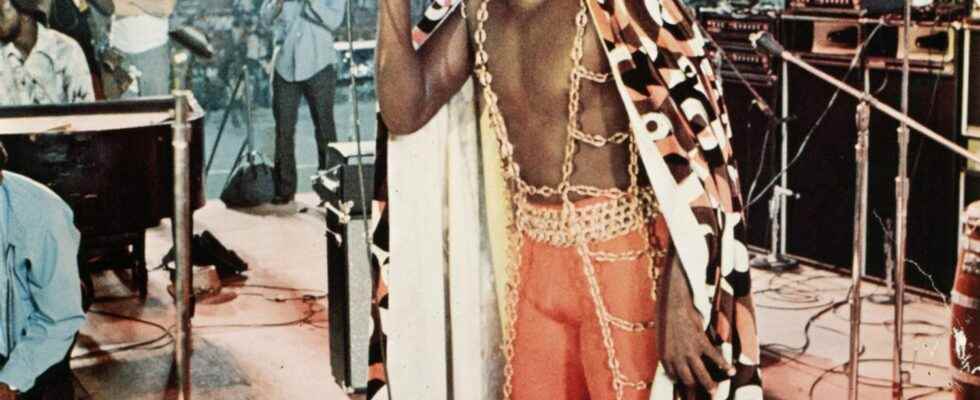It is a page of musico-political history still unknown: the complete recordings of Wattstax, the African-American Woodstock, with Isaac Hayes as a demi-god, finally appear on Friday.
To relive the African-American Woodstock of 1972, so far, it was necessary to be content with the highlights with two albums released in 1973 and the music of the documentary wattstax shown the same year and directed by Mel Stuart. Insufficient for more than seven hours of show. Half a century after the release of the film, the Stax label, at the origin of the event, publishes Friday February 24 various discs, which range from the simple best of with unreleased to the gargantuan collector’s box.
“Reinvigorating” the American black community
It all started in 1971, when Stax, home of Otis Redding or Isaac Hayes, based in Memphis, opened a branch in Los Angeles. Al Bell, leader of Stax, then takes the pulse of the inhabitants of the Watts ghetto. In 1965, the arrest by white police of a young black man, Marquette Frye, during a traffic check followed by an altercation with relatives, sparked a revolt in this deprived neighborhood. Result: 34 dead, 4,000 arrests, tens of millions of dollars in damage.
Al Bell, still alive today, described in the booklet of inhabitants having “lost hope“six years after the clashes with the authorities, as”on the verge of suicide“.”It’s the click: Al Bell gathers around him to organize the following summer an event to restore strength to this community“, explains to AFP Guy Darol, French author of Wattstax, August 20, 1972, black pridewho lectures on the subject.
“Still unknown to the general public”
Charity concerts on that Sunday stay with connoisseurs like the Black Woodstock. There was, however, a precedent in 1969 around Afro-American music with notably Stevie Wonder, Nina Simone, Sly and the Family Stone. The Harlem Cultural Festival brings together over six spaced days several hundred thousand people in total in an open-air park in New York.
This meeting, extricated from limbo recently by the documentary Summer Of Soul de Questlove (drummer for The Roots, producer, etc.), was therefore erased from the shelves of those curious about African-American music by Wattstax three years later. “Wattstax, still unknown to the general public, takes precedence among specialists over Harlem by its scale, with 112,000 people for a day with musical and political connotations.“, enlightens Guy Darol.
Great figures of African-American music
In the Coliseum stadium in Los Angeles in 1972, the Reverend Jesse Jackson is the master of ceremonies between shows. This figure of the struggle for civil rights will hammer his famous formula into the microphone: “I am somebody” (“I am someone“).”Initially, the festival was to be called Wattstock, in reference to Woodstock, but becomes Wattstax because most of the artists come from the Stax label“, recalls Guy Darol.

On the bill, Isaac Hayes, The Staple Singers, Rufus Thomas, Albert King, The Bar-Kays, among others. That’s Stax’s collection of gospel, blues, soul and funk gems. There are two cult moments. Isaac Hayes, the “Black Moses”, massive torso under gold chains, start shaft in front of a crowd galvanized by Jesse Jackson. A tube played twice in a row in full, under the pretext of a barely perceptible technical problem on disc.
Isaac Hayes outfit is “the starting point of dress-code in hip-hop, including its bling-bling dimension, while the career of the singer, who comes from poverty and helps the poor, shelters him from all criticism“, comments Guy Darol. The other highlight is the Rufus Thomas concert. The delirious public leaves their seats to rush in front of the stage, which was not planned. We hear the singer improvising punchlines to bring calm.”The atmosphere does not degenerate“, says Guy Darol, “and Wattstax remains a totally peaceful display of power by the African Americans present that day“.
